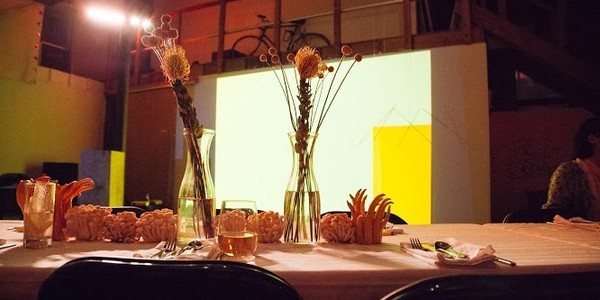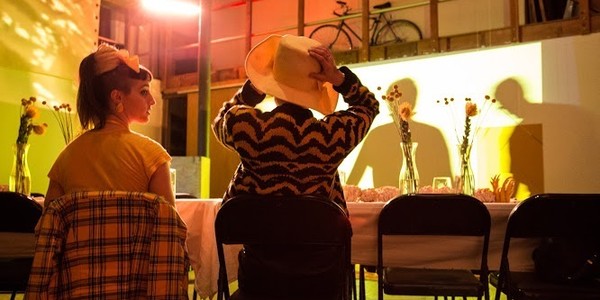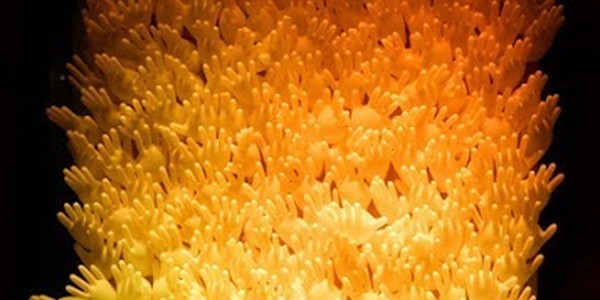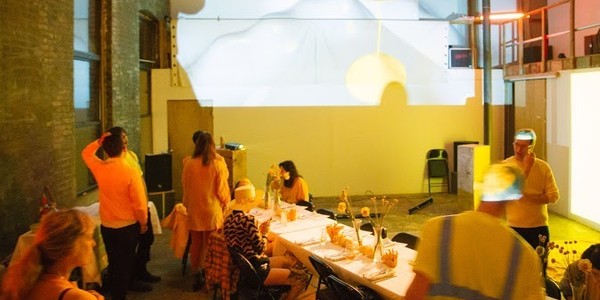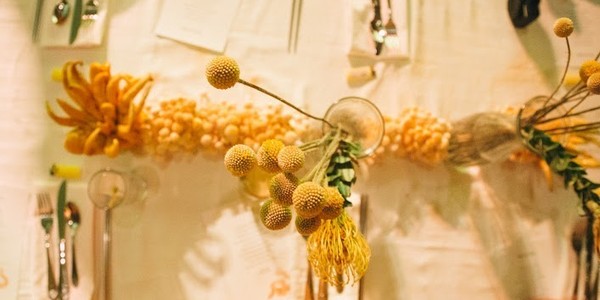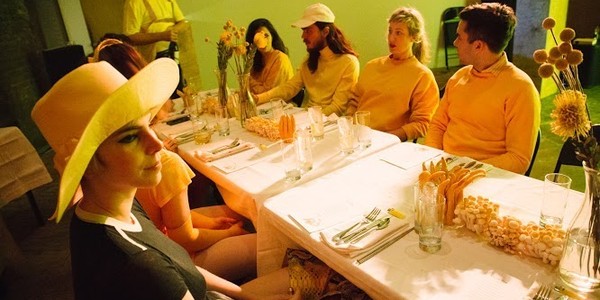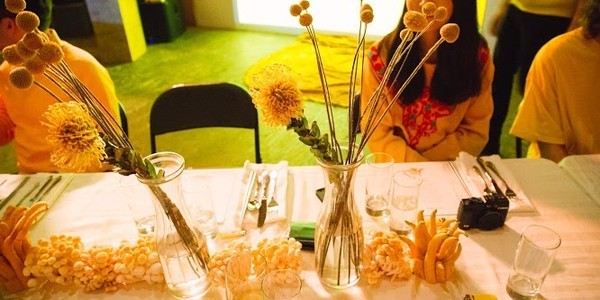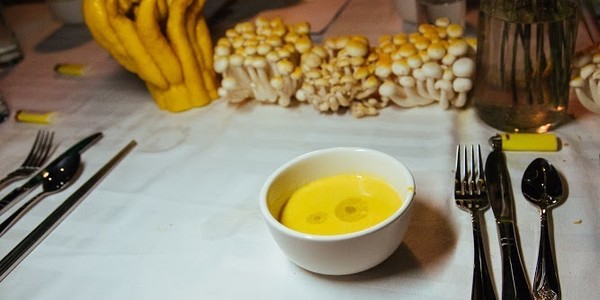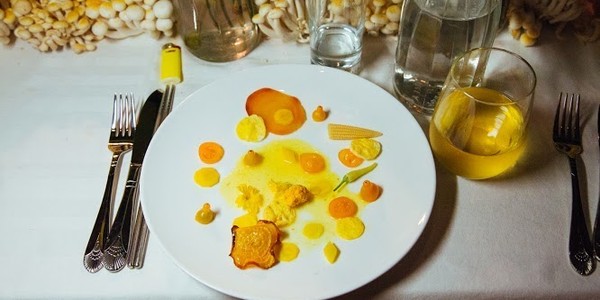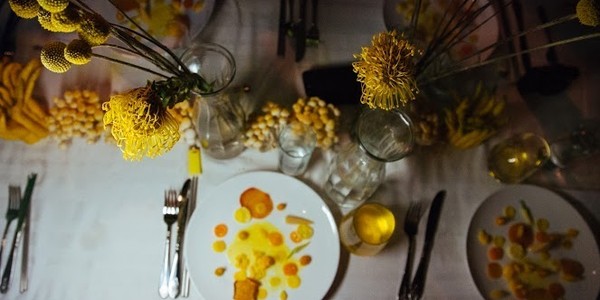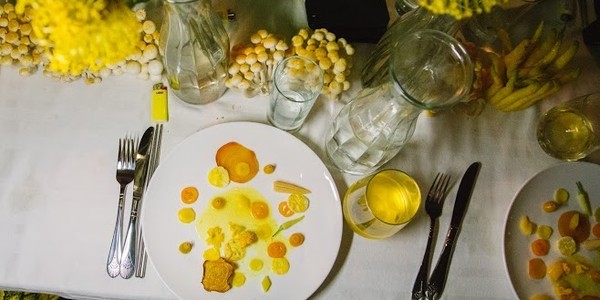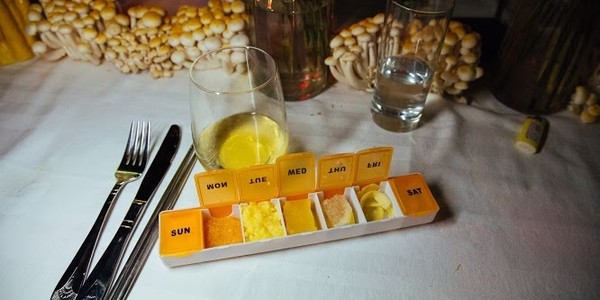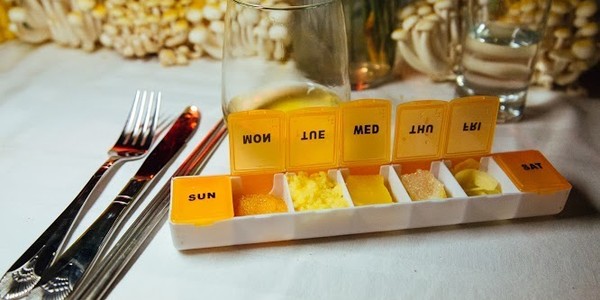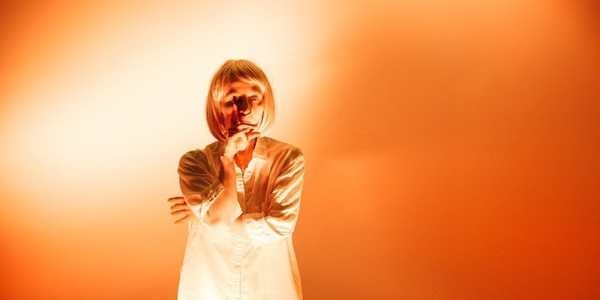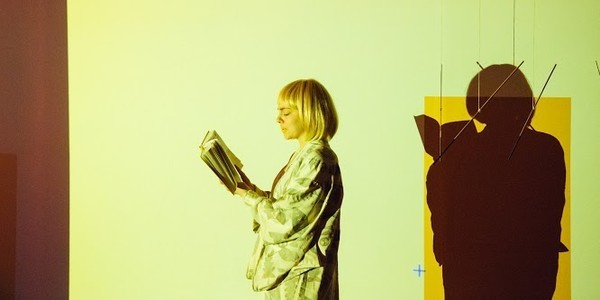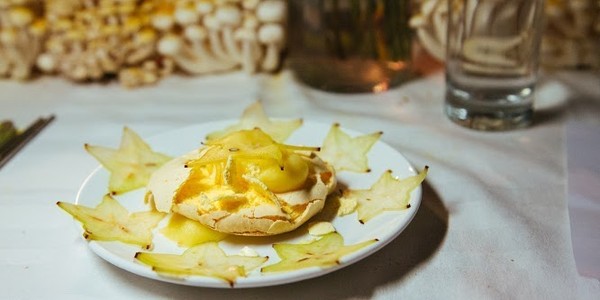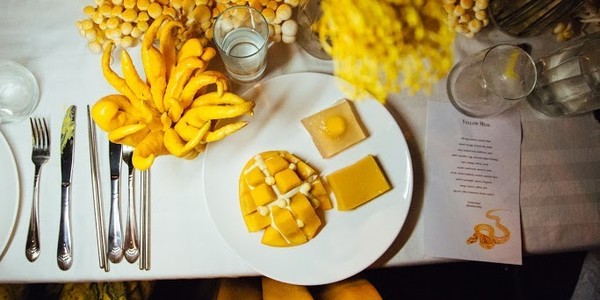Story + Photographs by Allie Wist
Translucent yellow hues filtered over a long dinner table set for 20, askew in the center of a spacious Bushwick loft. The entryway was decorated with art installations and thin, pale hanging sculptures. Video projections flickered on the far wall. Guests filtered in, passing in and out of beams of chartreuse light as they made their way to their seats. The atmosphere immediately lent an aesthetic answer to the question: “What is a Yellow Meal?”
Artist Jen Monroe was in the kitchen, putting the final touches on plates comprised entirely of yellow ingredients, part of a ten-course dinner exploring the color yellow. This Yellow Meal was the third in a series put on by Monroe and her sister. The inaugural event was a Black Meal, inspired by À Rebours by J.K. Huysmans. The novel follows the life of an aging aristocrat who holes himself up in his mansion and hemorrhages all his wealth on a series of deranged aesthetic endeavors, including an all black funeral banquet for his lost virility. Taken by the all-black dinner concept, Monroe and her sister decided to enact a similar event themselves. They served squid ink and and hijiki seaweed salads and dark blood sausage with Russian black bread. The dinner was a success, and they sought to evolve the concept in other forms through her online platform, Bad Taste Blog .
The second iteration was a Pink Meal, complete with beet-pickled deviled eggs, shrimp mousse, rhubarb cordials, cotton candy, and an impossibly sophisticated rose made of pale fuchsia ham.
“Pink was the most immediately appealing color for a dinner,” Monroe explained, “If my five year old self could have designed a dinner party, it might be something like Pink Meal. It’s unsophisticated and a little obscene. It lends itself to many different textures—squishy, gelatinous, frozen, fluffy.” The idea of a pink meal conjured up an inherently “sweet” assumptions, both visually and in terms of taste, which made the savory parts of the menu all the more surreal.
This time, she took on the challenge to build a menu from ingredients that were in season, available, and, yes, yellow. Monroe approaches her materials with an ascetic dedication, without using food coloring or any dyes in any of the dishes. The dinners are a way for her to provide a conceptual experience to eaters, one that brings our society’s obsession with how food looks to an extreme.
“A good section of the American population is more concerned with how food looks than how it tastes,” Monroe said. “I want to push that to its limit. What do they expect color to actually taste like?”
How does a monochromatic meal actually affect our conception of its flavor? Monroe argues that by stripping a dinner of its color variation, flavors are more nuanced and unexpected. Our first course doubled as an opening ritual to the evening: a tepache and mezcal cocktail, which we were asked to light on fire with a small yellow lighter included at each place setting. Inspired by the Chinese ritual of burning, the drink was a way for everyone to take ownership of their meal, and to partake in the creation of the sensory experience.
We were served a sculptural “salad” of carrot, yellow tomato, candied and roasted beet, baby corn, baby pepper, omelette, and palm sugar dressing. While none of the ingredients were strange or new, their presentation rendered them elusive. It was hard to expect how, exactly, the dish would taste. Each ingredient maintained its distinct flavor, which was almost unexpected since they all appeared in the same yellow hue. A soup course, comprised of smoked corn, cauliflower and ghee, had a rich and complex flavor, despite its pale appearance.
A sort of intangibility felt inherent in each dish; what does yellow really taste like, anyway? While yellow seems inevitably imbued with the optimism of sunshine, lemons, and rubber duckies (a qualitative opposite to the vibe of Monroe’s Black Meal), the evening’s dinner was a dark investigation into all the color’s more unnerving associations.
“I thought about what yellow means,” Monroe explained, “and what emotions it brought up. I thought a lot about anxiety and sickness. I wanted it to feel like natural cycles of life, death, and decay.” A course was served entirely in a compartmentalized pill container, with each day of the week containing an isolated component, like a square of tamago, pickled daikon, or saffron rice; the presentation alluded to her feelings of ailments and illness.
Halfway through our meal, the room quieted and turned its attention to a performance by artist Sarah Kinlaw, who collaborated with Monroe to articulate a shared vision of what the color yellow could convey beyond taste—in emotion and movement. Kinlaw’s movements oscillated between frantic and elongated, emotional forms, laying bare a sense of fear and even, at times, horror. A fluidity between gesture and consumption revealed itself, and the dinner’s persona grew more complete. For Monroe, performance art and installations are essential components of her concepts.
As the dinner continued, diners’ emotions were keyed into its temperament. A delicious ravioli of smoked haddock and zucchini was followed by a succulent and savory dessert of mango, paneer, saffron and jelly. The meal culminated in a digestif, with biting flavors of tobacco and fennel. As we clinked glasses and sealed the night, I saw yellow in a whole new shade.

